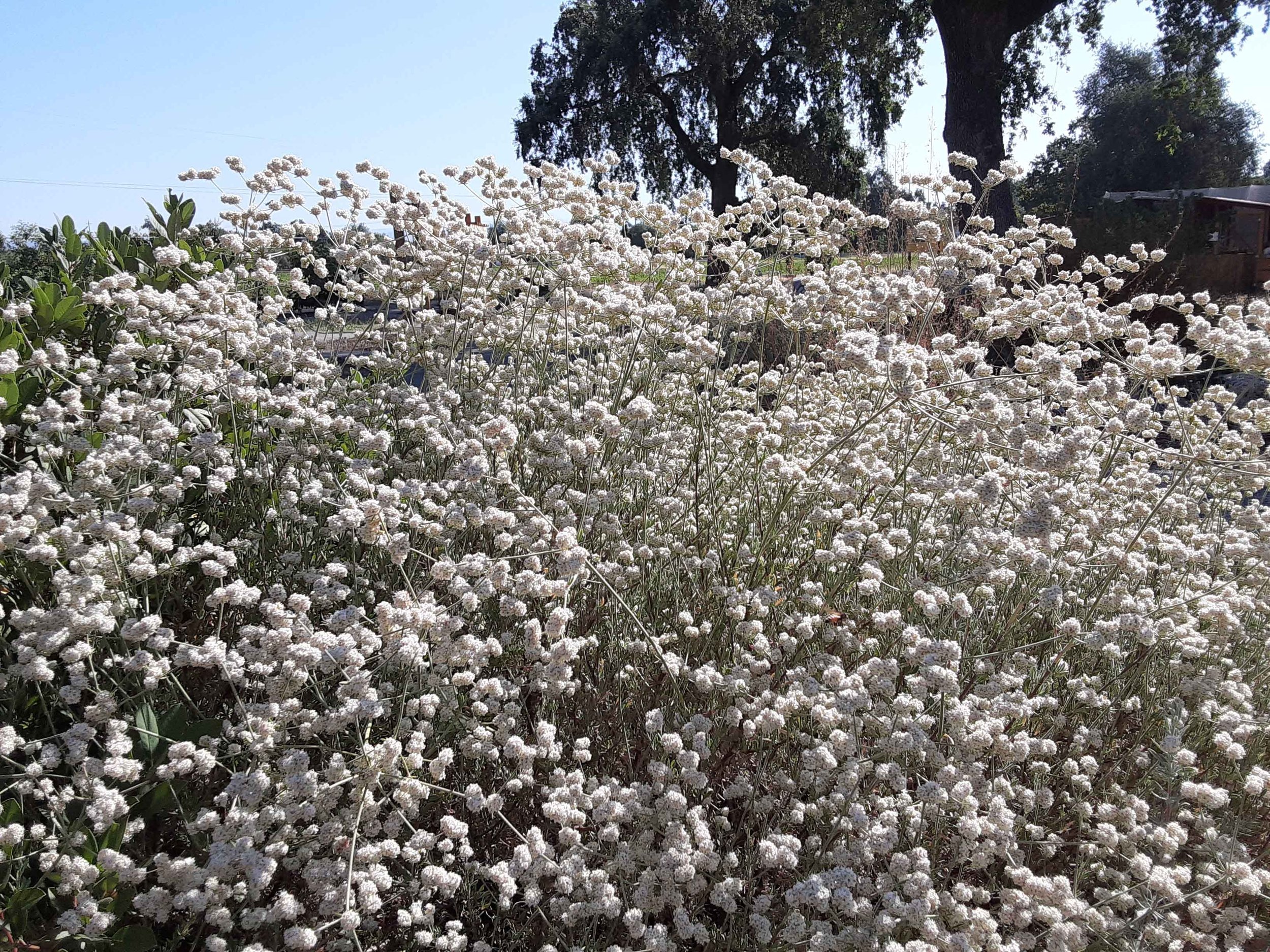
California Buckwheat
California Buckwheat (Eriogonum fasciculatum):
General information:
California buckwheat is considered a keystone species for scrub ecosystems as it provides habitats and foods for pollinators. It attracts one of most important pollinators: honey bees, and provides nectar year-round. California buckwheat is an extremely resilient plant, and grows easily even in dry/drought-like conditions. This plant creates its own natural mulch, by shedding its dried flowers and leaves.
Appearance:
California buckwheat’s flowers can vary in color such as white, yellow, cream, and pink. Its leaves appear to be wooly/fuzzy underneath and leathery on top.
Plant growth, season, and dormancy:
This plant is both a perennial herb and shrub ;it can grow up to 1-6.6 feet tall and 3 feet wide. California buckwheat can grow at both a slow and rapid rate depending on its environment and soil conditions. This plant remains evergreen throughout the seasons. California buckwheat’s flowering seasons include: spring, summer, and fall.
Landscaping information:
The plant requires full sun exposure, and is an extremely low moisture plant. Due to their low moisture content, it is recommended that you solely water buckwheat once a month. California buckwheat is a low maintenance plant, thus making it ideal for beginner gardeners. In addition, California buckwheat is extremely cold tolerant, and can withstand temperatures as low as 15ºF. This plant requires “loamy” soil, which a p.H. level of 5-8.
How to use:
California buckwheat is commonly used for groundcover, deer resistance, pollinator corridors, and bank stabilization.
Pollinators helped:
-Butterflies
-Bees
-Moths






